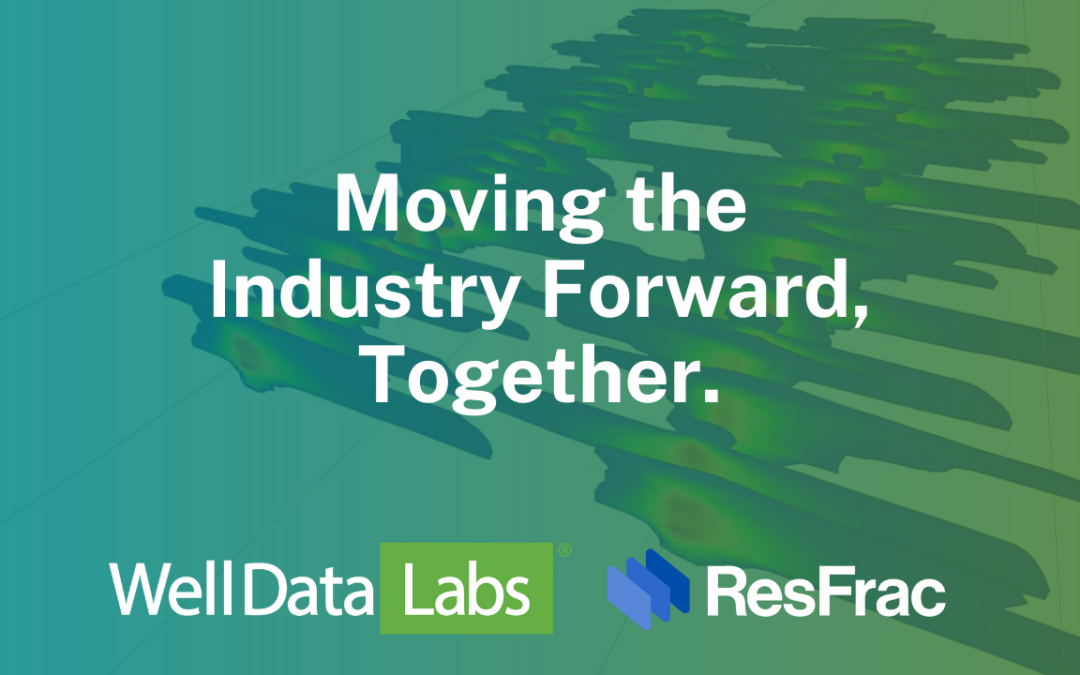The oil and gas industry is constantly seeking ways to optimize and improve production while keeping costs low and reducing environmental impacts. In the Eagle Ford shale, one of the most significant challenges faced by operators is determining the most efficient completion design for refracturing wells. When it comes to refrac design, it’s crucial to get it right the first time, as a suboptimal design can lead to decreased efficiency and profitability.
A cutting-edge approach to solving this problem involves combining state-of-the-art diagnostics such as Sealed Wellbore Pressure Monitoring (SWPM) with advanced fracture modeling. This combination – powered by a strategic partnership between Well Data Labs and ResFrac – can help operators identify the best completion design for their specific wells, ensuring maximum productivity and a strong return on investment. In this blog post, we will delve into a recent case study from the Eagle Ford shale, exploring the techniques used to optimize refrac designs and the key findings that emerged from this groundbreaking research. By understanding the insights gained from this study, operators and other stakeholders in the oil and gas industry can take informed steps towards improving the efficiency of their refrac programs and, ultimately, boosting production and profitability.
SWPM has been utilized across North and South America Basins with over 16,000 stages monitored as of mid-2022. Numerical models can now be automatically calibrated to the volume to first responses (VFRs) determined from SWPM. In this case study, fracture model calibration was performed assuming that restimulation fractures propagated independently of the previously created fractures. The modeled fracture geometries compare favorably to the calibration VFRs and the fiber strain (not used in the calibration). This process demonstrates a streamlined workflow for calibrating physics-based models to observed fracture geometries, strengthening insights from SWPM, and accelerating completion design optimization.
Considering the lessons learned and insights gained from the Eagle Ford shale case study, operators can optimize their refrac designs for maximum efficiency and production. Here are some steps you can follow:
- Leverage advanced diagnostics: Utilize Sealed Well Pressure Monitoring (SWPM) to gather information on the refrac wells’ behavior, cluster efficiency, and fracture geometry.
- Employ fracture modeling: Use advanced fracture modeling techniques to automatically history match the VFRs captured through SWPM, leading to a more accurate prediction of fracture behavior.
- Account for stage design differences: Understand that the VFR and fracture character differences are predominantly governed by stage design differences and not by heterogeneity, allowing for better optimization of completion designs.
- Consider stress anisotropy: While the case study assumed sufficient stress anisotropy, ensure your model takes into account any significant stress reorientation to achieve more accurate results.
- Identify optimal cluster efficiency: Analyze SWPM results to determine the highest cluster efficiency and confirm the findings with cross-well strain fiber data and fracture modeling.
- Understand fracture growth: Use the calibrated model to gain insights into non-dominant fracture growth, leading to a better understanding of the three-dimensionality of fracture propagation.
- Optimize completion architecture: Apply the insights gained from the calibrated model to test and improve completion architecture, leading to incremental improvements in efficiency and production.
- Match productivity with calibrated models: Implement a workflow for matching the productivity of the subject wells, which can be extended to optimize fracture design for various objectives, such as EUR, NPV, or IRR.
- Stay informed on advancements: Keep up-to-date with the latest research and advancements in refrac design, diagnostics, and modeling techniques to ensure your operations remain at the cutting edge of industry best practices.
In conclusion, the Eagle Ford shale case study highlights the importance of leveraging advanced diagnostics, fracture modeling, and data-driven insights to optimize refrac designs for maximum efficiency and production. By understanding the critical factors affecting completion designs and fracture propagation, operators can make informed decisions to enhance their operations.
Equipped with this knowledge, you can take steps to implement these strategies in your own projects, leading to increased profitability and better resource management. We are excited about our recent partnership with ResFrac to bring these joint capabilities to our customers.
Don’t hesitate to reach out to our team for more information or for further resources on this topic, and stay tuned for more developments in refrac design and optimization in the coming months.

